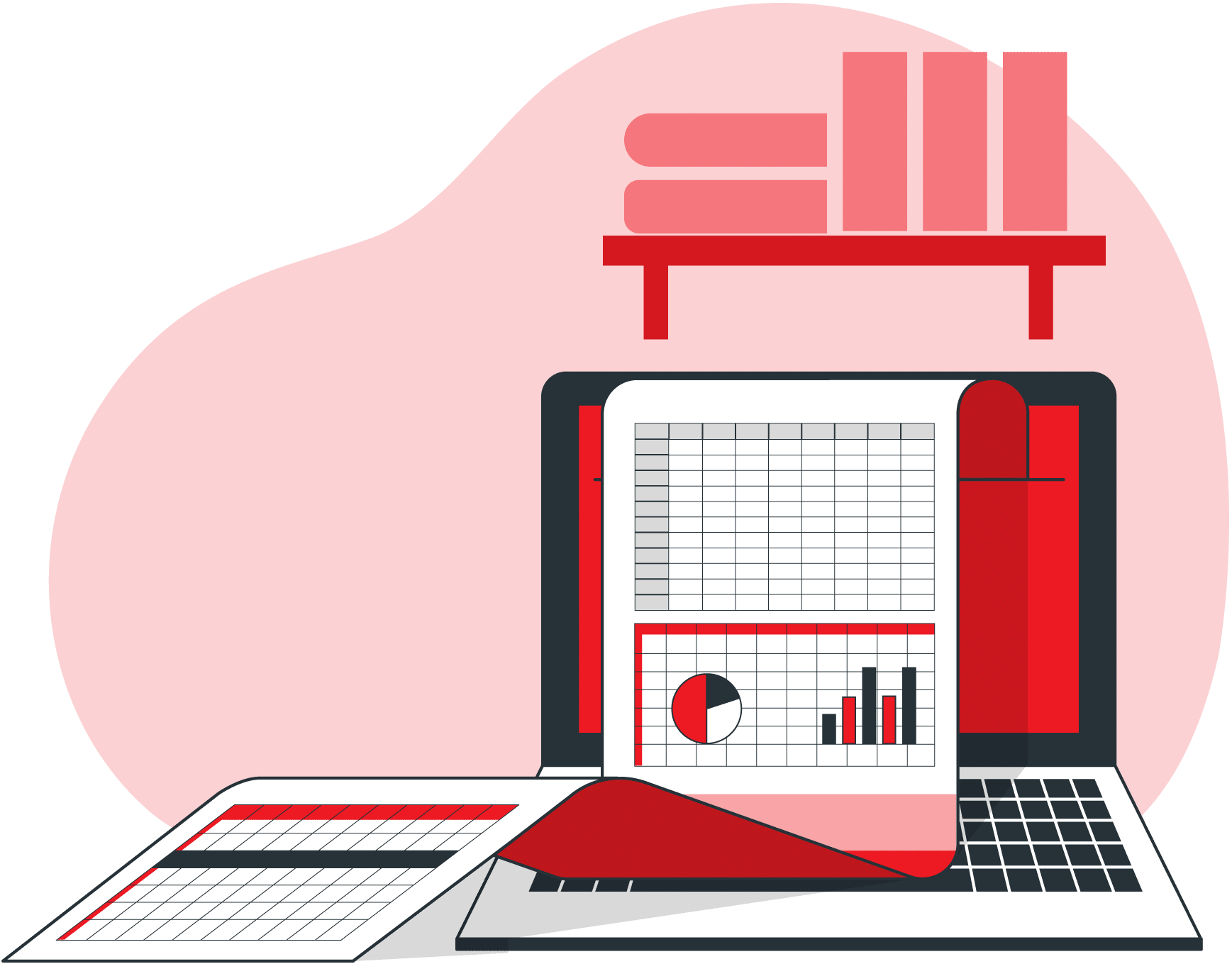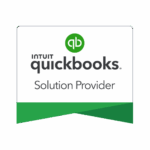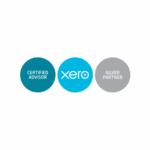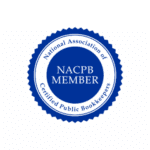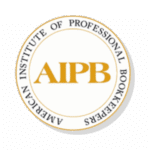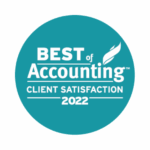At the end of 2001, the IRS audited the Enron corporation, then convicted the company of fraud. Enron filed for bankruptcy after the former Chairman admitted to falsifying the company’s balance sheet.
He created a subsidiary company to hide liabilities, so Enron’s balance sheet reflected falsely inflated earnings. This, in turn, elevated Enron’s equity value on pretenses, lining shareholders’ pockets with lies.
You may not own a public company, but it’s good to keep a balance sheet no matter your company’s size. Learning how to read a balance sheet is a basic component of financial literacy.
Fortunately, understanding a balance sheet is straightforward. It just involves learning a few simple financial terms.
What is a Balance Sheet?
A balance sheet is a financial document that delineates a company’s assets, liabilities, and equity. It’s called a “balance sheet” because the total value of all combined assets must balance (equal) the total value of all liabilities, plus equity.
If those two halves of the sheet don’t balance out, something’s off. Either there’s an error in the recordkeeping or the math. It could be an honest mistake–or it could be a sign a company is lying about its accounts.
The purpose of a balance sheet is to track the company’s overall health. The IRS, financial analysts, and investigative journalists examine a company’s balance sheet to detect fraud and money laundering.
Small business owners typically use a balance sheet to calculate critical ratios about their own company. These ratios give you a snapshot of different financial health metrics.
Who is a Balance Sheet For?
A balance sheet is primarily for the people who make financial decisions within a company. But, some companies provide a balance sheet to the IRS when they file taxes. This is mandatory for all corporations that make over $250,000.
For smaller companies, only potential investors and shareholders will read the balance sheet. And, of course, the business owner keeps a balance sheet to keep track of their own company’s wellbeing.
Financial Document Trio
A balance sheet is one of the three primary financial documents all businesses need. The financial document trio includes the balance sheet, the income statement, and the cash flow statement.
How to Read a Balance Sheet
A balance sheet is a list of rows called “lines.” You read a balance sheet from top to bottom.
A balance sheet is divided into the left and right sides. Typically, the left side names each unique asset, liability, and type of equity as a line item. The right side notes the value of each item.
Classified balance sheets have subcategories. To understand these subcategories, see “What Goes on a Balance Sheet?”
Recording Line Items
To record a line item, note every unique liability, asset, and type of equity your company has. Record it and its value on the balance sheet. If you don’t know the value of an asset, you might seek an asset valuation.
There are two general asset valuation methods. You can evaluate with an absolute valuation method, like a discounted cash flow model or a calculated intangible value.
Or, you can use a relative valuation. People can dispute a company’s valuation when different appraisers estimate the value of a specific asset or liability differently.
What Goes on a Balance Sheet?
Three categories make up a balance sheet. Divide your balance sheet into three components: assets, liabilities, and equity. You can further divide these sections into sub-categories.
Assets
Assets are either “current” or “non-current.” You can convert current assets into cash within a year. You can’t turn non-current assets into cash easily.
Current
Current assets are cash in the bank, or they’re something that can become cash soon (like a debt owed to your company.) The most common current assets are:
- Cash
- Cash Equivalents
- Accounts Receivable
- Inventory
- Short-Term Investments
You can turn some of these assets into useable money faster than others. If it takes longer than one year, though, that’s a non-current asset.
Non-Current (Long-Term)
Non-current assets are valuable, but they aren’t useable money. They cannot be converted to cash in one year. Common non-current asset categories include:
- PP&E (property, plant, and equipment)
- Securities
- Long-Term investments (growth stocks)
- Intangible Assets (patents, IP, goodwill, client list)
These assets are often more valuable than current assets in the long run. But, it may take a while for these assets to pay off.
Liabilities
Liabilities are debts. They detract from a company’s value: more liabilities, lower equity. Like assets, liabilities can be current or non-current.
Current
Current liabilities must be repaid within a year. Often, you must pay off these debts sooner than that. Common current liabilities include:
- Accounts payable
- Short-term debt (bank loan, company credit card, interest payments)
- Back taxes
- Outstanding wages and fees (unpaid invoices from contractors, consultants)
Be careful if your company’s current liabilities outweigh its current assets. It may be in trouble.
Non-Current
Non-current liabilities are debts that you don’t need to pay off in a year. Some non-current liabilities aren’t meant to be paid off for decades. These can include:
- A business line of credit
- Long-term business loan
- Asset-based financing
Keep track of all non-current liabilities. This ensures an accurate valuation.
Equity
Equity is the total value of a company. It’s the difference between assets and liabilities. Types of equity include:
- Initial capital
- Earnings
- Draw (owners)
- Stock (preferred or common)
- Shareholders’ equity
Combined equity and liabilities must not exceed the value of all assets. If it does, the company may be committing fraud.
Examples
A small business balance sheet is a useful tool. Balance sheets can be simple or classified. Here are examples of both types.
Classified Balance Sheet Example
A classified balance sheet creates sub-categories. It lets you aggregate your line items into classes (hence the term “classified”).
This article explored a classified balance sheet method. We sub-categorized our assets and liabilities into “current” and “non-current” classes.
Examine this classified balance sheet template from Score. The Score is the Small Business Administration’s non-profit arm. Use it to create a balance sheet for yourself.
Simple Balance Sheet Example
A simple balance sheet does not classify assets or liabilities by subcategory. Instead, to fill out a simple balance sheet, simple use general categories.
Look at this simple balance sheet example to compare the difference. That template comes from Harvard Business School.
Ratios: Understanding a Balance Sheet
Equations and ratios let you truly make sense of a balance sheet. Once you have the balance sheet, equations let you determine a company’s health.
Financial analysis can be complex. But, a beginner can get a solid start when they learn to calculate five critical ratio equations:
- The current ratio
- The quick ratio
- The cash ratio
- The debt-to-asset ratio
- The solvency ratio
Master these ratios. You’ll understand any company’s financial health status better.
Current Ratio
The current ratio is simple. Take the total value of your assets. Divide it by the total value of your liabilities. The resulting fraction is your current ratio.
Write your current ratio as [assets] : [liabilities]. A higher ratio is better.
This is similar to the solvency ratio. If the resulting fraction is less than one, the company is almost certainly not solvent.
Quick Ratio
This quick ratio is an acid test. Can you pay off all short-term liabilities with immediate assets? Take the value of your current assets. Ignore non-current assets.
Then, divide that number by the total value of your current liabilities. If the resulting value is higher than one, you’re in the clear. If the ratio is lower than 1:1, that’s a bad sign.
Cash Ratio
Like the quick ratio, the cash ratio tells you how liquid a company is.
To calculate the cash ratio, add up only cash and cash assets. Then, divide that by all current liabilities.
If the ratio is less than one, it’s a sign a company needs to move assets to get more cash on hand. If it’s significantly higher than one, a company may want to invest its cash better.
Debt-to-Asset Ratio
The debt-to-asset ratio determines how much a company depends on equity. That is, does it run primarily off its own value, or is it significantly dependent on outside lenders?
Add up all liabilities. Divide this by all assets (including intangible assets). The quotient is the debt-to-asset ratio.
A “good” debt-to-asset ratio varies by industry. But, across the board, a company with a higher ratio is more leveraged.
Solvency Ratio
A business begins in debt. But if it never becomes solvent or trending away from solvency over time, this ratio is an early alert.
To calculate this ratio, you need your balance sheet and the income statement. You might call that the “P&L Sheet.”
First, calculate your net income. Subtract your total expenses from your total revenues. Then, take that difference (the net income) and add in depreciation.
Take this sum, then divide it by all liabilities. A ratio over one means the business is solvent.
Remember that there’s a limit to any ratio’s utility. A ratio can only tell you about a company’s past. It can’t inform you about the present or the future.
Balance Sheets by Bookkeeping Pros
Even after learning how to read a balance sheet, keeping up with all your financial documents can be challenging. Don’t let a struggle understanding a balance sheet become a barrier to your success.
Instead, get help from a pro. Expert accounts and bookkeepers can handle business finances, no matter your company’s size. Contact us today, and learn about services that can solve your problems.

